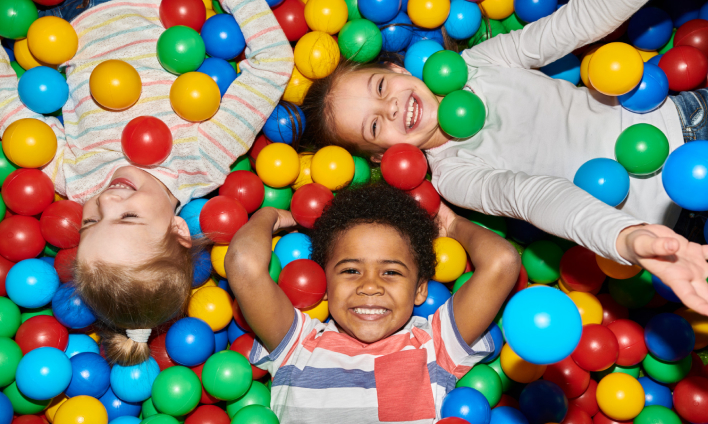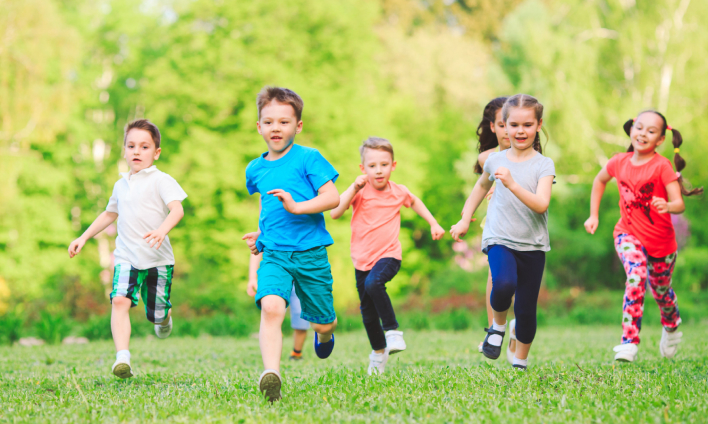Best Sensory and Educational Toys for Nonverbal Autism
Discover the best sensory and educational toys for nonverbal autism, perfect for skill-building, engagement, and fun.
June 23, 2025
Key Points:
- Toys for nonverbal autism support communication, sensory needs, and cognitive development.
- Sensory toys can help regulate emotions, reduce anxiety, and provide soothing tactile input.
- Educational toys can build problem-solving skills, imitation, and early learning through play-based learning methods.
According to studies, up to 30% of autistic children are minimally verbal. These children require the right toys that can open up avenues for communication, motor development, and engagement—especially for those who are still learning to express themselves without words.
That said, finding the right toys for a nonverbal child with autism can be overwhelming for parents. In this article, we’ll go over the best sensory and educational toys for nonverbal autism and how they can support your child’s growth in ways that are both meaningful and enjoyable.
What are the Best Toys for Nonverbal Autism?
The best toys for nonverbal autism are sensory-friendly, encourage interaction, and support skill development without relying on verbal instructions. These toys often focus on tactile stimulation, visual engagement, and cause-and-effect play.
Many of them help reduce frustration and promote communication through gestures, signs, or visual cues. While every child is different, many benefit from toys that support sensory integration, motor planning, and social-emotional growth.
Why are Sensory Toys Important for Nonverbal Children?
Sensory toys offer more than fun—they meet critical developmental needs. Children with nonverbal autism often experience sensory processing challenges, which means their brains may respond differently to sensory input such as touch, sound, or movement.
Toys that offer controlled sensory feedback can help children feel safe, calm, and engaged. These tools can also encourage repetitive play, which provides a sense of predictability and comfort. When a child feels regulated, they are more open to learning and interacting with others.
What re the Best Sensory Toys for Nonverbal Autism?
Choosing the right sensory toy depends on your child’s specific sensory preferences. Some children seek tactile input, while others may be drawn to visual motion or deep pressure.
Here are some of the most effective sensory toys for children with limited or no verbal communication:

Each of these toys addresses a different sensory need, making them versatile for a variety of play environments—from home to school to therapy sessions.
What Should Parents Consider Before Choosing a Sensory Toy for Autism?
When selecting a sensory toy for a child with autism, parents should consider the child's specific sensory needs, preferences, and developmental level. Some children may seek tactile input, while others may need calming visual or auditory stimulation.
Safety, durability, and the ability to promote engagement are also important factors. Look for toys that encourage interaction without overwhelming the child. It's also helpful to choose items that align with therapeutic goals—such as improving focus, motor skills, or self-regulation. Always observe how your child responds to a toy to ensure it offers comfort and meaningful support.
What Educational Toys Help Nonverbal Kids Learn?
While sensory toys help with regulation, educational toys help with skill-building. Nonverbal children still have strong learning potential—they simply need tools that align with how they best receive and process information.
Educational toys should focus on visual learning, motor imitation, matching, and problem-solving. The key is engagement without depending on verbal directions.
The top educational toys for nonverbal autism include:
Cause-and-Effect Toys (e.g., pop-up toys, musical buttons)
These toys teach children that their actions lead to specific results, promoting independence and curiosity through self-initiated play.
Shape Sorters and Puzzle Boards
These support spatial reasoning, matching, and fine motor planning, and can be introduced with simple modeling rather than spoken instructions.
Color and Object Matching Games
Matching games help with visual scanning and categorization, laying the foundation for future academic tasks like reading and math.
Stacking and Nesting Toys
By engaging hand muscles and coordination, these toys support motor development while also reinforcing sequencing and problem-solving.
Magnetic Drawing Boards or Etch-A-Sketches
These encourage writing behaviors and creative expression without requiring verbal language, supporting early literacy and motor practice.
Many of these toys can also be adapted into therapy or homeschool routines, and some can double as communication aids when paired with PECS or AAC symbols.
How Can Toys Support Communication in Nonverbal Children?
Toys for nonverbal autism aren't just for entertainment—they can become tools for language development. While a child may not be speaking, they are still communicating through gestures, sounds, facial expressions, and behaviors.
Play can act as a bridge to communication by teaching a child how to make choices, express preferences, and even imitate social interactions.
Here’s how toys can support communication skills in nonverbal children:
Prompting Requests
Toys can be used as motivators to teach a child how to request through gestures, signs, or AAC tools like speech-generating devices or picture boards.
Imitation and Joint Attention
Engaging in play with others encourages skills like copying actions and following another’s focus—key steps in developing meaningful social communication.
Labeling and Identifying
Parents can model language by labeling toys, actions, and emotions during play, helping the child associate symbols or sounds with objects and ideas.
Turn-Taking Skills
Using toys in games that require taking turns helps children understand social routines and prepares them for interactive play with peers.
Communication doesn’t have to be verbal. The right toys can teach the structure and intent of language—even before a single word is spoken.
How Does ABA Therapy Use Toys in Learning?
Applied Behavior Analysis (ABA) therapy often incorporates toys as a central part of learning. Through play-based intervention, therapists use motivating toys to teach skills, reduce unwanted behaviors, and build social engagement.
In sessions with nonverbal children, therapists often use toys to:
Teach Requesting and Labeling
Therapists use preferred toys to prompt children to request items using signs, gestures, PECS, or AAC devices, gradually introducing verbal labels as appropriate.
Reinforce Appropriate Behaviors
Toys serve as reinforcers, helping motivate children to follow instructions, complete tasks, or transition smoothly between activities.
Build Imitation and Matching Skills
Simple toys like blocks, puzzles, or toy animals are used to teach motor imitation, visual matching, and problem-solving through guided play.
Encourage Attention and Task Persistence
Therapists use highly motivating toys to sustain a child’s focus, helping them complete longer tasks or work through challenges with support.
Because ABA focuses on individualized goals, the choice of toys is based on each child’s developmental needs, preferences, and responses to reinforcement.
Empower Your Child With ABA Therapy
Choosing the right toys is a powerful step, but for many families, structured support is equally important. At Astra ABA, we provide individualized ABA therapy in Indiana, Kansas, and North Carolina designed to meet your child’s unique communication, sensory, and learning needs.
Our compassionate team works closely with families to turn play into progress—using toys, visual supports, and structured routines to support growth in real-life situations.
Contact us today to learn how ABA therapy can help your child connect, grow, and thrive—whether through toys, structured teaching, or relationship-based play.
Related Content
Liked this article? Check out these related posts to learn even more!






Ready to start your journey with ASTRA ABA?
Contact us today for a consultation and let us be a part of your child's path to success.
Get In Touch



.jpg)

.jpg)




.png)


